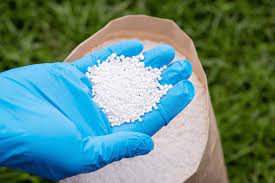
Introduction
Liquid fertilizer is a versatile and effective option for nourishing your plants, whether you’re a home gardener, a farmer, or a professional landscaper. Unlike traditional granular fertilizers, liquid fertilizers are in a liquid form, allowing for faster nutrient absorption and precise application. In this article, we’ll explore the world of liquid fertilizer, its benefits, types, and how to use it to maximize the health and growth of your plants.
Benefits of Liquid Fertilizer:
-
Quick Nutrient Absorption: Liquid fertilizers are readily absorbed by plant roots, providing a rapid nutrient boost. This can be especially beneficial during periods of stress or when immediate nutrient correction is needed.
-
Uniform Application: Liquid fertilizers can be distributed evenly across your plants, ensuring that all areas receive the necessary nutrients. This precise application helps prevent over-fertilization or nutrient imbalances.
-
Versatility: Liquid fertilizers can be applied through various methods, including foliar spraying, soil drenching, or irrigation systems, making them suitable for a wide range of plants and growing environments.
-
Customizable Formulations: Liquid fertilizers come in various formulations to cater to specific plant needs, such as balanced NPK ratios for general growth or specialty formulas for specific crops.
-
Minimized Risk of Salt Buildup: Unlike some granular fertilizers that can lead to salt buildup in the soil over time, liquid fertilizers are less likely to contribute to soil salinity issues.
Types of Liquid Fertilizers:
-
Complete Liquid Fertilizers: These contain all essential nutrients, including nitrogen (N), phosphorus (P), and potassium (K), as well as secondary and micronutrients. They are suitable for overall plant health and growth.
-
Specialty Liquid Fertilizers: These are formulated for specific plant types or growth stages, such as flowering, fruiting, or root development. They may have higher concentrations of certain nutrients tailored to those needs.
-
Organic Liquid Fertilizers: Made from natural sources, organic liquid fertilizers provide nutrients while also enhancing soil health. They are an environmentally friendly choice for organic gardening.
How to Use Liquid Fertilizer:
-
Dilution: Most liquid fertilizers require dilution with water. Follow the manufacturer’s instructions for the recommended dilution rate. Use a measuring container to ensure accuracy.
-
Application Methods:
- Foliar Spray: Spray the diluted liquid fertilizer directly onto the leaves, allowing for rapid nutrient absorption.
- Soil Drench: Apply the diluted fertilizer at the base of the plant, allowing it to soak into the soil.
- Irrigation System: Inject the liquid fertilizer into your irrigation system for even distribution.
-
Timing: Apply liquid fertilizer when your plants are actively growing. This is typically during the growing season, but specific timing may vary based on plant type and local climate.
-
Frequency: Follow the recommended application frequency on the product label. Over-fertilization can harm your plants, so avoid excessive or too-frequent applications.
-
Storage: Store liquid fertilizer in a cool, dry place away from direct sunlight and extreme temperatures. Proper storage ensures the longevity and effectiveness of the product.
Conclusion
Liquid fertilizer is a valuable tool for promoting healthy plant growth and increasing crop yields. Its fast nutrient absorption and versatility make it a popular choice among gardeners and agricultural professionals. By choosing the right type of liquid fertilizer, following proper application methods, and adhering to recommended rates, you can help your plants thrive and achieve the lush and bountiful results you desire.


